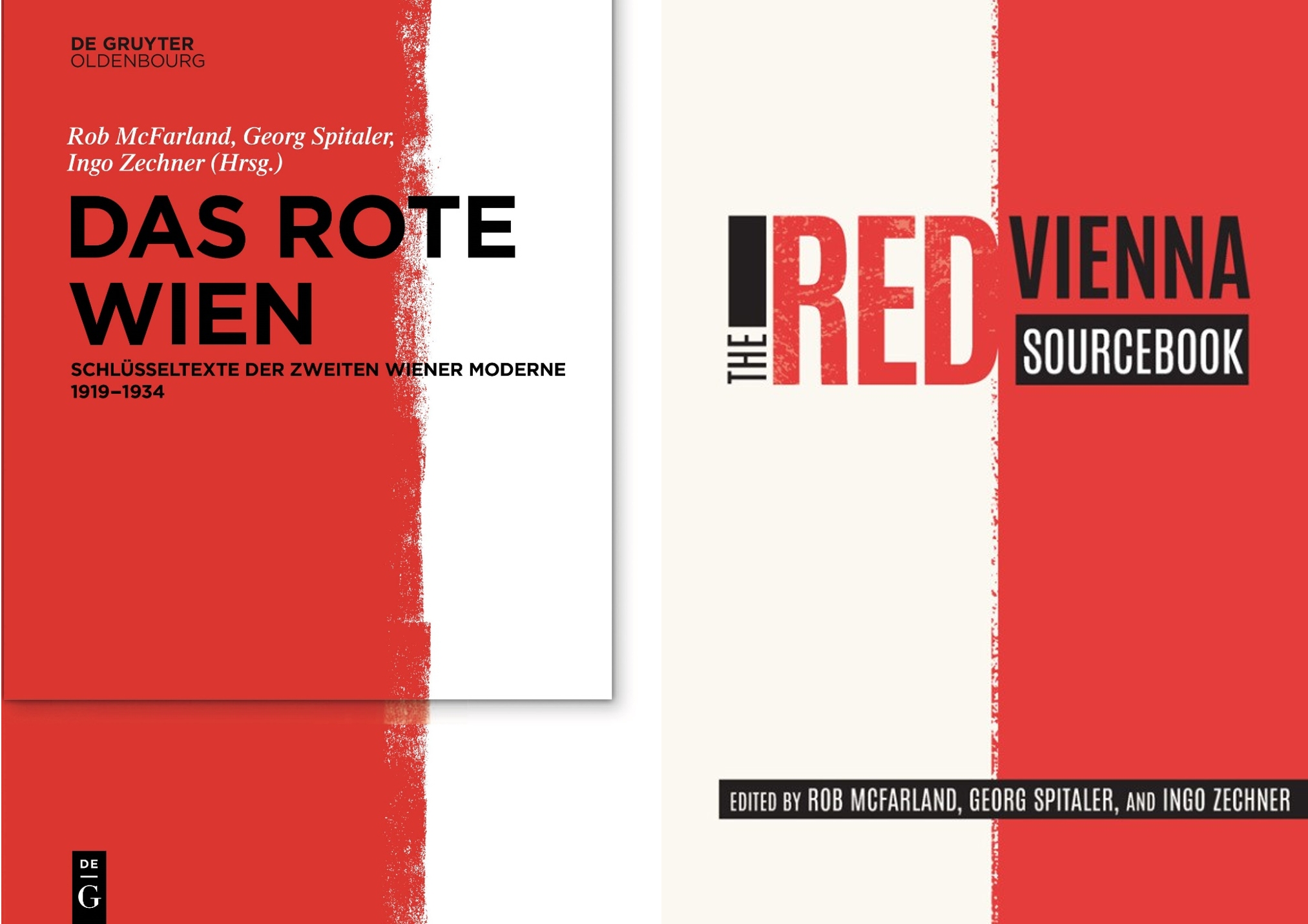Red Vienna Sourcebook
Project Funding: City of Vienna MA 7
Project Duration: 2017–2020
Project Lead: Ingo Zechner (LBIDH), Georg Spitaler und Michaela Maier (VGA, Austrian Labor History Society)
Project Team (Editors): Erik Born (Cornell University), Nicole Burgoyne (University of Chicago), Veronika Duma (University of Vienna), Wolfgang Fichna (Vancouver/Vienna), Kristin Kopp (University of Missouri), Aleksandra Kudryashova (Harvard University), Tres Lambert (Gettysburg College), Rob McFarland (Brigham Young University), Birgit Nemec (Heidelberg University), Vrääth Öhner (LBIDH), Katrin Pilz (LBIDH), Alicia Roy (UC Berkeley), Joachim Schätz (LBIDH), Werner Michael Schwarz (Wien Museum), Cara Tovey (UC Berkeley), Gabriel Trop (UNC Chapel Hill), Georg Vasold (FU Berlin), Gernot Waldner (Harvard University), Azadeh Yamini-Hamedani (Simon Fraser University), Marie-Noëlle Yazdanpanah (LBIDH)
Support: Jacob Benfell (Brigham Young University), Christopher Taylor (Brigham Young University)
Project Partners: Ludwig Boltzmann Institute for Digital History (LBIDH) (until February 2019: Ludwig Boltzmann Institute for History and Society, LBIGG), VGA, Austrian Labor History Society, international research network BTWH (Berkeley/Tübingen/Vienna/Harvard)
Ever since the publication of “The Weimar Republic Sourcebook” edited by Anton Kaes, Martin Jay, and Edward Dimendberg, Weimar Studies have firmly established themselves as a field of scholarly inquiry. Similarly, Carl E. Schorske’s book “Fin-de-Siècle Vienna: Politics and Culture” catapulted Vienna at the turn of the century into a focal point of international research.. Schorske’s work associated Viennese Modernism with the transition from the 19th to the 20th century. However, the vibrant cultural milieu of New Vienna in the 1920s and early 1930s has unjustly remained in the shadow of Weimar Republic studies and has struggled to assert its place in cultural history. The primary objective of this international research and editing project was to rectify this situation.
The exploration of Second Viennese Modernism encountered several practical challenges. Foundational texts that previous research relied upon were widely dispersed, and many were out of print. Moreover, most crucial German-language texts lacked English translations, and contextual information about these texts was often missing. This project aimed to overcome these obstacles through its bilingual approach (German/English) and the collaboration of esteemed scholars from US institutions such as Berkeley, Harvard, and Chapel Hill, as well as other English and German-speaking universities. This collaborative effort sought to pave the way for further international research in this field.
Initially used as a derogatory term by political opponents, “Red Vienna” was later embraced as a self-designation and ultimately achieved a mythic status. It is now seen as an alternative epochal concept that extends beyond the confines of the Social Democratic city administration’s political project. Rather than accepting a linear progression from one war to another, the aim was to view “Red Vienna” as a realm of possibilities. What do the promises of the past reveal about historical potentials, political struggles, continuities and ruptures, as well as (unfulfilled) emancipatory aspirations?
A collaborative effort involving the Ludwig Boltzmann Institute for Digital History (formerly Ludwig Boltzmann Institute for History and Society, LBIGG), the Austrian Labor History Society (VGA), and the international research network BTWH (Berkeley-Tübingen-Vienna-Harvard) brought together around 25 international scholars with diverse interdisciplinary backgrounds. They conducted foundational research on 36 topics that represent key aspects of the cultural, political, and social debates of “Red Vienna.” These research findings were presented at international conferences.
The ultimate result of this undertaking is the “Red Vienna Sourcebook.” This sourcebook serves as both an introductory textbook and a standard reference work for teaching and research in international universities. It is also accessible to a wider audience both domestically and internationally. The book is available in both English and German editions, each spanning approximately 800 pages. It includes essential texts written between 1919 and 1934 that are thematically connected to “Red Vienna.” These texts are meticulously annotated on three levels: each chapter begins with an introduction that presents the chapter’s theme, addresses key questions, and explains the criteria used for selecting the texts. After each text, there is a concise commentary that provides philological explanations about the text’s origin, abridgment, and contemporary reception, along with references to additional readings. Footnotes offer essential supplementary information for understanding individual texts, including names of individuals and organizations.

